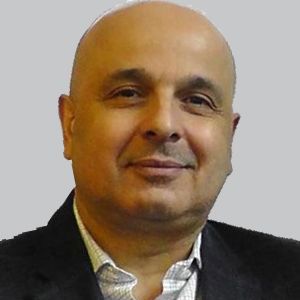Commentary
Video
Introduction of Antisense Oligonucleotides to Treat Genetic Forms of Epilepsy: Joseph Sullivan, MD
Author(s):
The director of the Pediatric Epilepsy Center at UCSF discussed STK-001, an antisense oligonucleotide in development for Dravet syndrome, and the promise behind this type of targeted approach. [WATCH TIME: 4 minutes]
WATCH TIME: 4 minutes
"I’m super excited. Like all things in clinical medicine and research, we start studying these novel treatments in a more refractory group of patients that are later along in their disease journey. That’s certainly how we have to do it in terms of the ethics, introducing a novel treatment that we don’t know [much about] the safety and efficacy profile."
Developmental and epileptic encephalopathies are devastating neurological disorders presenting during infancy and early childhood that are characterized by refractory seizures, global developmental delay, intellectual disability, and movement disorders. The prognosis of these patients is poor, marked by progressive disability and increased risk of early death. After several decades of development, antisense oligonucleotides (ASOs) have recently been approved as a treatment for spinal muscular atrophy and Duchenne muscular dystrophy, with potential to treat other neurologic conditions.
At the 35th International Epilepsy Congress (IEC) held September 2-6, in Dublin, Ireland, several presentations covered STK-001 (Stoke Therapeutics), an investigational ASO in development to treat patients with Dravet syndrome (DS). DS is a rare disease, with an estimated incidence rate of 1:15,700, with the majority of patients carrying a mutation in the sodium channel gene SCN1A. Currently, the disease is managed by several different approved antiseizure medications, including the recent introduction of cannabidiol; however, there are no approved therapies that focus on the underlying pathology of the disease.
To learn more about the potential of ASOs as a treatment option for rare epilepsies like DS, NeurologyLive® sat down with Joseph Sullivan, MD, director of the Pediatric Epilepsy Center at UCSF. Sullivan, an expert in the field, provided his thoughts on the advances in research that led to this point, and the shift in how gene therapy approaches are viewed for patients with epileptic encephalopathies. He spoke on the promise of STK-001, its mechanism of action, and how it opens the door for future research in this field.
REFERENCE
1. Stoke Therapeutics presents data related to the ongoing clinical development of STK-001 for the treatment of Dravet syndrome at the 35th International Epilepsy Congress. News release. September 5, 2023. Accessed September 15, 2023. https://investor.stoketherapeutics.com/news-releases/news-release-details/stoke-therapeutics-presents-data-related-ongoing-clinical
Newsletter
Keep your finger on the pulse of neurology—subscribe to NeurologyLive for expert interviews, new data, and breakthrough treatment updates.




